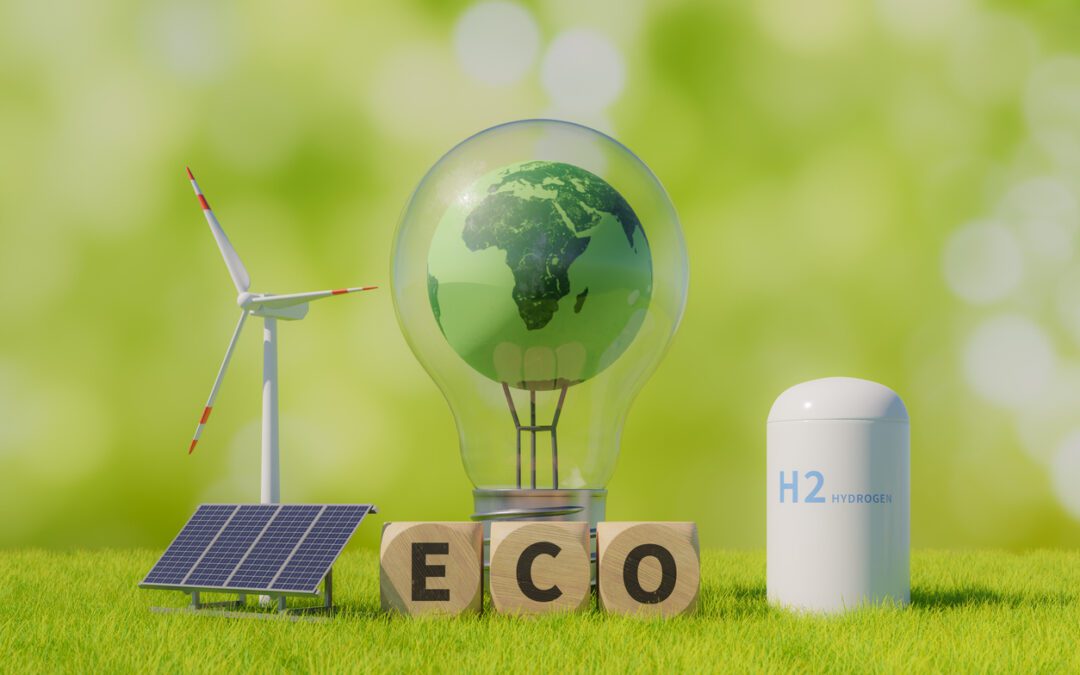Exploring Sustainability in Additive Manufacturing
Sustainability is a global priority and industries are continually seeking innovative solutions to reduce their environmental footprint. One groundbreaking technology making waves in manufacturing is 3D printing. Beyond its ability to revolutionize production processes, 3D printing is also driving eco-friendly practices by offering sustainable alternatives to traditional manufacturing methods.
Sustainable practices in the manufacturing industry are of paramount importance. Embracing sustainability helps manufacturers reduce their environmental footprint by minimizing resource consumption, energy usage, and waste generation. This not only mitigates environmental degradation but also fosters long-term ecological resilience and biodiversity conservation. Sustainable practices enhance operational efficiency and resilience by optimizing resource utilization, reducing production costs, and mitigating supply chain risks associated with resource scarcity and regulatory changes.
Sustainable manufacturing practices contribute to improved corporate reputation, brand loyalty, and stakeholder trust, as consumers increasingly prioritize environmentally responsible companies. Sustainable manufacturing fosters innovation and drives market competitiveness by incentivizing the development of eco-friendly technologies, materials, and processes. Ultimately, the value of sustainable practices in the manufacturing industry extends far beyond immediate economic gains, encompassing environmental stewardship, societal well-being, and long-term business viability. In this blog, we’ll explore how 3D printing is paving the way for greener manufacturing practices and contributing to a more sustainable future.
Reduced Material Waste
One of the most significant advantages of 3D printing is its ability to minimize material waste. Unlike traditional subtractive manufacturing processes, which involve cutting away excess material from a solid block, 3D printing builds objects layer by layer using only the material required for the final product. This additive manufacturing approach significantly reduces material waste, as unused materials can be recycled and reused for subsequent prints. By optimizing material usage, 3D printing helps manufacturers minimize their environmental impact and conserve valuable resources.
To illustrate the advantage of minimizing material waste through 3D printing, consider the production of customized prosthetic limbs. Traditional manufacturing methods often involve carving prosthetic limbs from solid blocks of material, resulting in significant material wastage. Conversely, 3D printing allows prosthetic limbs to be fabricated layer by layer, using only the precise amount of material required. This not only minimizes waste but also enables more intricate and personalized designs tailored to each individual’s unique anatomy. Additionally, in the aerospace industry, where lightweight components are crucial, 3D printing offers immense value. By using additive manufacturing techniques, aerospace manufacturers can create intricate parts with complex geometries while minimizing material usage, leading to lighter and more fuel-efficient aircraft. This approach aligns with the industry’s goals of reducing environmental impact and increasing operational efficiency.
Energy Efficiency
In addition to reducing material waste, 3D printing also offers energy-efficient manufacturing solutions. Traditional manufacturing processes often require substantial energy inputs for heating, molding, and shaping raw materials. In contrast, 3D printing consumes less energy, as it only requires the heating of the printing material and the operation of the printer itself. Moreover, 3D printing enables the consolidation of multiple components into a single printed object, reducing the need for assembly and further lowering energy consumption. By promoting energy efficiency, 3D printing helps manufacturers decrease their carbon emissions and mitigate climate change.
To exemplify the energy-efficient manufacturing solutions offered by 3D printing, let’s consider the automotive industry. Traditional manufacturing methods for automotive parts, such as injection molding or machining, involve significant energy consumption for heating and shaping raw materials. In contrast, 3D printing allows automotive manufacturers to produce complex components with reduced energy inputs. For instance, General Motors has utilized 3D printing to produce lightweight components for their vehicles, such as brackets and exhaust parts. By consolidating multiple parts into single printed components, 3D printing reduces assembly requirements, streamlines production processes, and ultimately lowers energy consumption throughout the manufacturing cycle. Additionally, in the construction sector, where energy-intensive processes are common, 3D printing presents an eco-friendly alternative. By using 3D printing to fabricate building components like walls and panels, construction companies can significantly reduce energy consumption compared to traditional manufacturing methods, contributing to sustainable construction practices.
Localized Production
Another eco-friendly aspect of 3D printing is its potential to facilitate localized production and decentralized supply chains. Traditional manufacturing often involves long-distance transportation of raw materials and finished products, resulting in significant carbon emissions from transportation vehicles. However, 3D printing enables on-demand production of goods at or near the point of consumption, eliminating the need for long-distance shipping. This localized production model reduces transportation-related emissions and promotes sustainable practices by minimizing the environmental impact of logistics and distribution.
To illustrate the potential of 3D printing to facilitate localized production and decentralized supply chains, let’s consider the fashion industry. Traditionally, clothing manufacturing involves sourcing materials from various locations, followed by assembly in centralized factories often located far from the point of sale. This results in substantial carbon emissions from transporting raw materials and finished garments across long distances. However, with 3D printing, fashion designers can produce clothing items on-site or at local manufacturing facilities, eliminating the need for extensive transportation. For example, Adidas has embraced 3D printing technology to create customizable sneakers, allowing customers to have their shoes printed locally or even at home. By adopting a localized production model, Adidas reduces its carbon footprint associated with global supply chains while offering personalized products to consumers. Similarly, in the food industry, 3D printing presents opportunities for localized production of customized nutritional supplements or personalized food items. By producing food locally using 3D printing technology, companies can minimize transportation emissions and promote sustainable food practices, aligning with the growing demand for eco-friendly and locally sourced products.
Biodegradable Materials
Furthermore, advancements in materials science are enabling the development of biodegradable and eco-friendly printing materials for 3D printing. Manufacturers can now choose from a variety of sustainable materials, such as bioplastics derived from renewable sources like corn starch or algae-based polymers. These biodegradable materials offer a more environmentally friendly alternative to traditional petroleum-based plastics and reduce the accumulation of non-biodegradable waste in landfills. By embracing biodegradable materials, 3D printing contributes to the circular economy and fosters a more sustainable approach to manufacturing.
There are several biodegradable materials commonly used in 3D printing that contribute to sustainable manufacturing processes:
- PLA (Polylactic Acid): PLA is one of the most popular biodegradable materials used in 3D printing. It is derived from renewable resources such as corn starch or sugarcane and is compostable under the right conditions. PLA is widely used for a variety of applications, including prototypes, consumer products, and packaging.
- PHA (Polyhydroxyalkanoates): PHA is a family of biodegradable polymers produced by bacteria and other microorganisms. It is fully biodegradable in natural environments, making it an environmentally friendly material choice for 3D printing. PHA is often used for applications where biocompatibility and sustainability are essential, such as medical implants and environmentally friendly packaging.
- PVA (Polyvinyl Alcohol): PVA is a water-soluble polymer that is commonly used as a support material in dual-extrusion 3D printing. It is biodegradable and can be dissolved in water, eliminating the need for harsh chemicals to remove support structures from printed objects. PVA is often used in conjunction with PLA or ABS (Acrylonitrile Butadiene Styrene) to create complex geometries and intricate designs.
- TPU (Thermoplastic Polyurethane): TPU is a flexible and elastic material that is commonly used in 3D printing for applications such as flexible parts, seals, and gaskets. Some formulations of TPU are biodegradable, making them suitable for environmentally conscious manufacturing processes. TPU is often used in industries such as footwear, automotive, and medical devices.
- Hemp-based Filaments: Hemp-based filaments are derived from hemp fibers, a renewable and sustainable resource. These filaments are biodegradable and offer similar properties to traditional PLA filaments, making them suitable for a wide range of 3D printing applications. Hemp-based filaments are gaining popularity among environmentally conscious makers and manufacturers seeking sustainable material options.
As sustainability becomes increasingly important in global supply chains, 3D printing offers a viable solution for reducing environmental impact and advancing greener manufacturing practices. By harnessing the power of 3D printing technology, industries can embrace sustainability, minimize their ecological footprint, and contribute to a healthier planet for future generations.
Nota3D comprises 3D printing enthusiasts boasting over 40 years of combined industry expertise. With diverse backgrounds spanning technical support, operations, applications, customer support, and sales, we deliver comprehensive solutions to the companies we serve. What sets us apart is our deeply personalized approach, driven by genuine interest and curiosity. We believe in thoroughly understanding our clients’ processes, both current and future, before proposing any solutions. Even if the best-fit solution doesn’t come from us, our commitment remains unwavering. Our primary focus is to establish trust and become a reliable partner to our clients. This dedication has earned us the trust of top companies nationwide, ranging from garage inventors to leading medical device firms. And our clientele continues to expand as we prioritize integrity and excellence in every interaction. Visit our website to get started.

